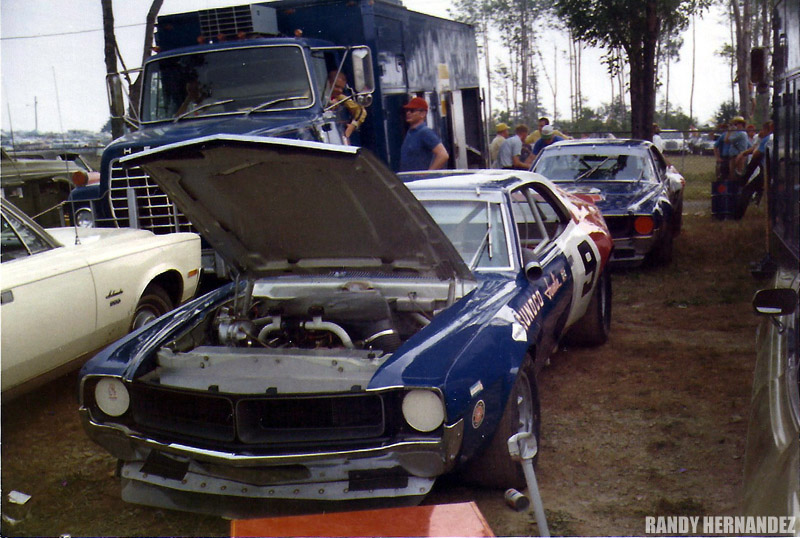-
Administrator

Perhaps the biggest news of the 1970 Trans-Am series was Penske switching from Chevrolet to American Motors. This was a big deal. Penske had won the championship the past two seasons for Chevrolet, running Camaros. In addition, Roger Penske himself was a Chevrolet dealer.
Much of the success was a result of the massively talented Mark Donohue, who was the ultimate all-rounder. He would design and develop the cars, and he could drive them as fast as the very best. He was also an unbelievably hard worker.
While Penske were the factory Chevy team the past three seasons, I don't know that they ever received any money from General Motors. Remember, GM had their "no racing" policy at the time. However, behind the scenes they provided a huge amount of engineering support to Penske, including designing, manufacturing, and homologating parts that helped Penske win.
But American Motors were desperate to win the Trans-Am series, and they agreed terms with Roger Penske for a vast sum of money, around 2 or 3 million dollars, which was a huge amount at the time. But they wanted results, and there was plenty of pressure. According to Donohue, Roger Penske announced they'd win the Trans-Am Championship in 1970. Of course, this never happened. In fact, AMC were about to release Penske from their contract following Round 5 at Bridgehampton. They planned to tell them after the race. But, as luck would have it, Donohue won the race.
If you ever get the chance to buy a copy of Mark Donohue's book The Unfair Advantage, grab it. Its a fascinating insight into his life in racing, and how much it consumed him. But he really struggled in 1970, as the team fought to make the Javelin a race winner. Remember, AMC had been in the Trans-Am series since 1968, and hadn't won a race until that victory at Bridgehampton.
Penske really became the biggest competitors for the Bud Moore factory Mustang team, taking a total of three race victories. But they weren't actually as fast at most events as the Mustangs. They suffered engine problems in the early races, and their first victory came about not by being faster than the competition, but being smarter. Most Trans-Am races were long, and required at least one pit stop. As a result, the cars would also run around in a gaggle on the track, battling each other. Then they'd all make their pit stops at around the same time. The Penske team figured they could be faster if they were in clear air, and didn't have to share pit lane with the other teams, so brought Donohue in much earlier than the competition. He then spent the rest of the race driving around on his own, and everyone forgot about him. It was a clever tactic, and won American motors their first Trans-Am race.
Of course, when the rest of the factory team withdrew from the Trans-Am series in 1971, American Motors were champions the next two years.
This is a neat shot of the Penske team, and its two cars. Team mate to Donohue in 1970 was the brilliant Peter Revson. He won races and championships in several formulas, including Formula 1 and Can-Am, but he wasn't as fast as Donohue in the Trans-Am series.
Thats Revson's Javelin #9, with Donohue's car in behind. If you look carefully in the drivers seat of the Penske transporter, you can see Mark Donohue with his head and arm sticking out, having a chat.

 Posting Permissions
Posting Permissions
- You may not post new threads
- You may not post replies
- You may not post attachments
- You may not edit your posts
-
Forum Rules







 Reply With Quote
Reply With Quote